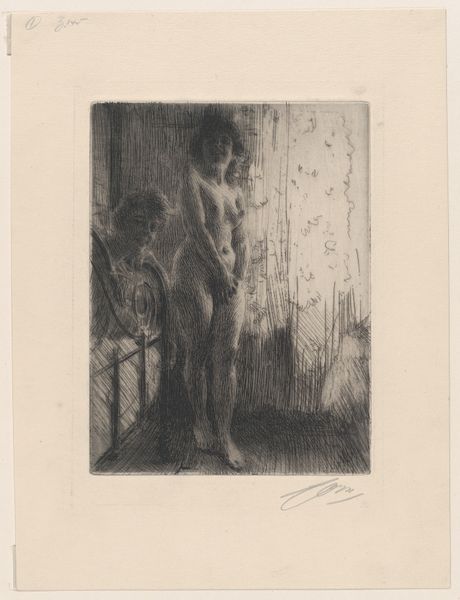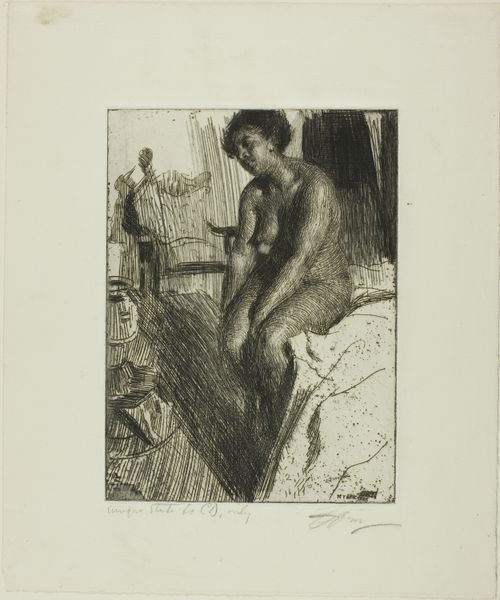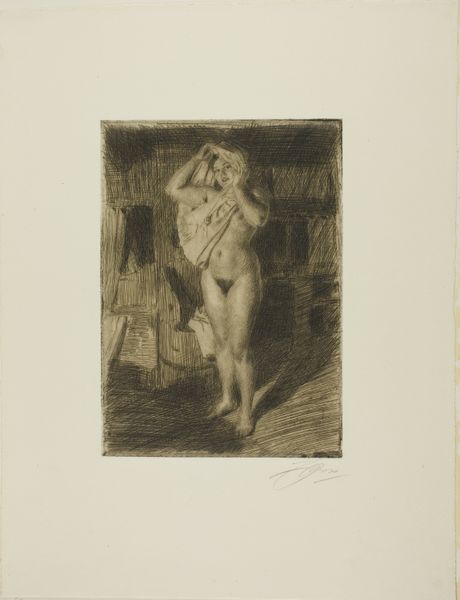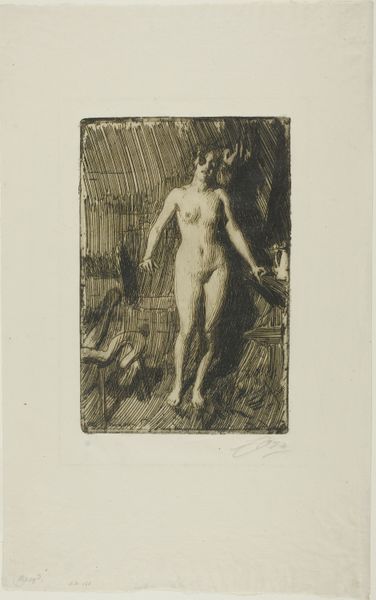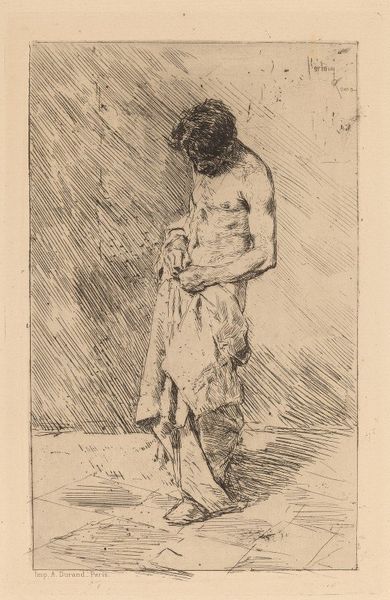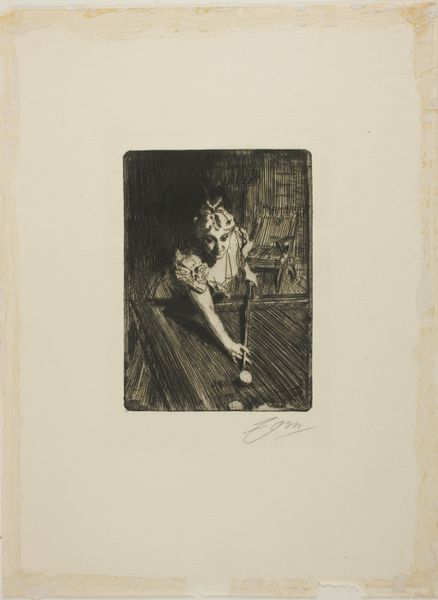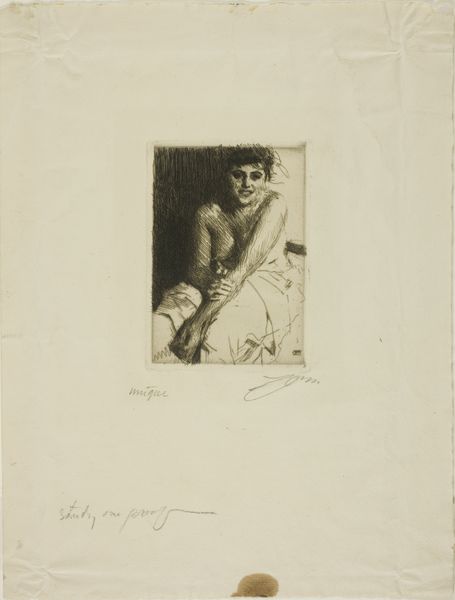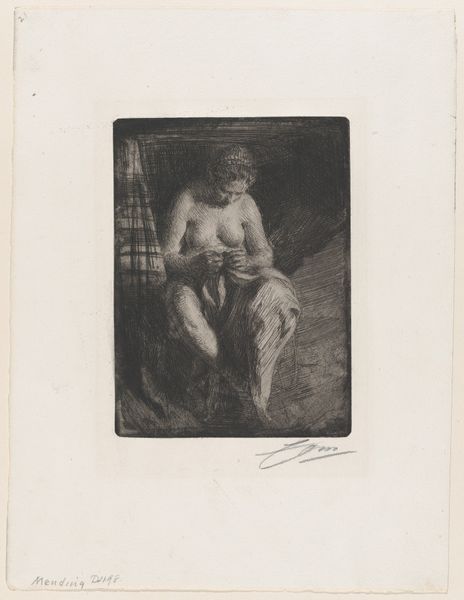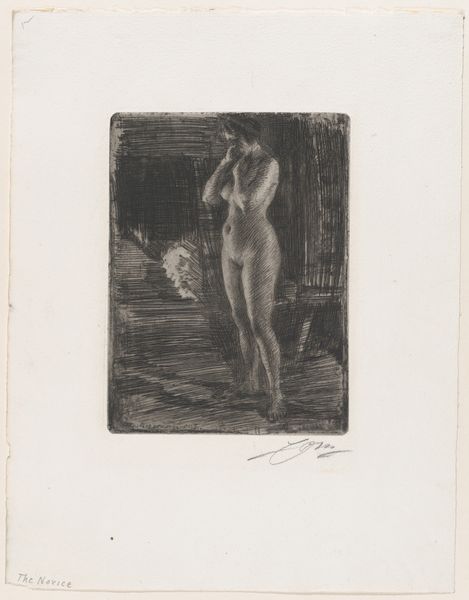
Dimensions: 198 × 150 mm (image/plate); 320 × 240 mm (sheet)
Copyright: Public Domain
Anders Zorn created this etching, "A Dark Corner", in 1893. It depicts a nude woman standing in what appears to be a bedroom, with a man partially visible in the shadows. Zorn was Swedish, and though he spent much of his career in Paris, he maintained a fascination with the culture of his homeland. Looking closely, we can ask how the image creates meaning through visual codes. The woman’s nudity, for example, might reference both classical ideals of beauty, but also a more modern and perhaps provocative depiction of the female form. Sweden at the end of the 19th century was undergoing rapid modernization, with growing social tensions. Artists like Zorn often grappled with questions of national identity. Etchings like this one could be seen as both celebrating and critiquing contemporary social norms. Historians of art can bring many kinds of research to bear on its interpretation, exploring sources from artist biographies to exhibition reviews to social surveys. It is through those means that we come to see art's meanings as contingent upon the cultural and institutional context of its making.
Comments
No comments
Be the first to comment and join the conversation on the ultimate creative platform.
